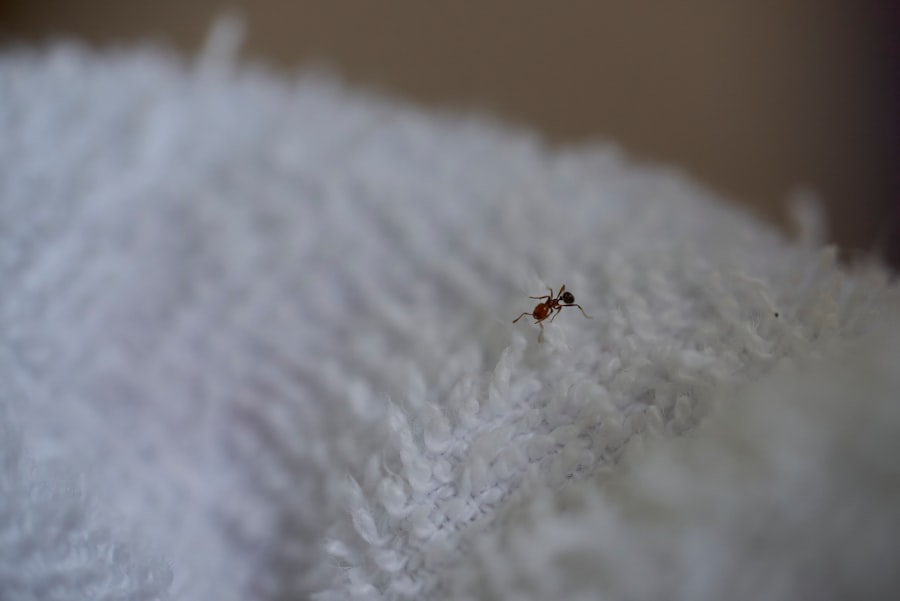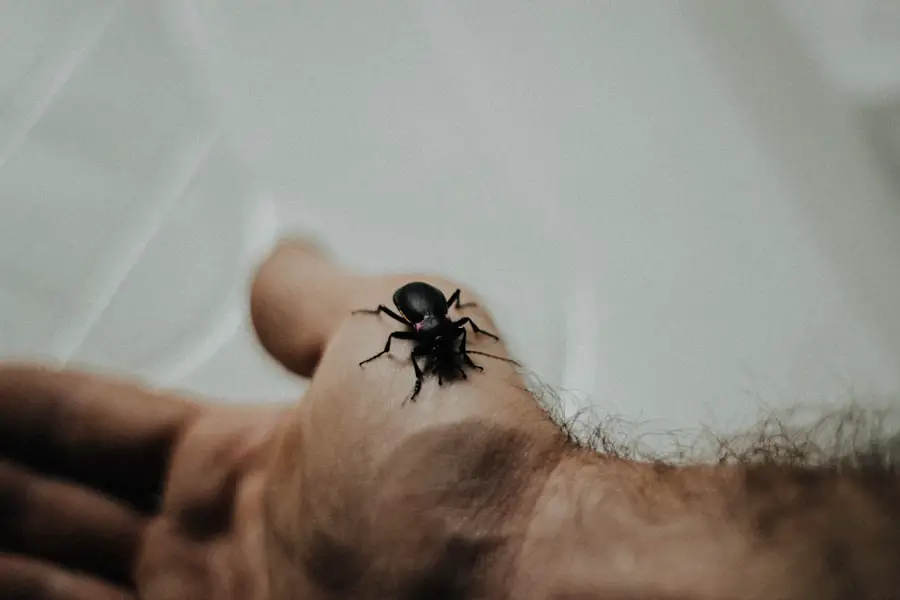Bed bugs, scientifically known as Cimex lectularius, are small, parasitic insects that feed on the blood of humans and other warm-blooded animals. These nocturnal creatures are notorious for their ability to hide in the tiniest of crevices, making them particularly challenging to detect and eradicate. Bed bugs are typically reddish-brown in color, oval-shaped, and about the size of an apple seed.
Their resilience and rapid reproduction rate have made them a significant concern in both residential and commercial settings, particularly in hotels and motels where transient populations can facilitate their spread. The resurgence of bed bugs in recent years can be attributed to various factors, including increased international travel, changes in pest control practices, and the insects’ growing resistance to common pesticides. Unlike many other pests, bed bugs do not transmit diseases; however, their bites can lead to significant discomfort, anxiety, and sleepless nights.
Understanding the biology and behavior of bed bugs is crucial for effective prevention and control measures, especially for travelers who may unknowingly bring these pests back home.
Key Takeaways
- Bed bugs are small, reddish-brown insects that feed on the blood of humans and animals.
- Common signs of bed bug infestation include itchy welts on the skin, blood stains on bedding, and a musty odor in the room.
- When checking for bed bugs in hotel rooms, start by inspecting the bed and bedding for signs of infestation.
- Examine furniture and upholstery, including the seams and crevices, for any signs of bed bugs or their eggs.
- When traveling, be sure to search for bed bugs in luggage and personal belongings to prevent bringing them home.
Common Signs of Bed Bug Infestation
Identifying a bed bug infestation early is essential for effective management. One of the most common signs is the presence of small, reddish-brown stains on bedding or mattresses, which are often the result of crushed bed bugs or their excrement. These stains can be mistaken for rust or other types of marks, but a closer inspection will reveal their true nature.
Additionally, bed bug fecal matter appears as tiny black dots scattered around areas where they hide, such as seams of mattresses or cracks in furniture. Another telltale sign of a bed bug infestation is the presence of shed exoskeletons. As bed bugs grow, they molt several times, leaving behind their discarded skins.
These skins are often found in areas where bed bugs congregate, such as along mattress seams or in the corners of furniture. Furthermore, a strong, musty odor may be present in heavily infested areas due to the pheromones released by bed bugs. Recognizing these signs early can help prevent a minor issue from escalating into a full-blown infestation.
How to Check for Bed Bugs in Hotel Rooms

When checking for bed bugs in hotel rooms, it is essential to approach the task methodically. Start by placing your luggage on a luggage rack or a hard surface away from the bed and walls. Avoid placing bags directly on the floor or on upholstered furniture, as these areas are prime hiding spots for bed bugs.
Once your belongings are secured, begin your inspection by examining the bed itself. Begin with the mattress and box spring. Carefully lift the mattress and inspect the seams and edges for any signs of bed bugs or their droppings.
Pay close attention to the corners and folds where they may hide. Next, check the headboard and bed frame by looking for any cracks or crevices that could harbor these pests. It is also wise to inspect nearby furniture, such as nightstands or dressers, as bed bugs can easily migrate from one surface to another.
Inspecting the Bed and Bedding
| Bed Inspection Metrics | Results |
|---|---|
| Bed cleanliness | 95% |
| Bedding condition | Good |
| Bed bugs presence | None |
| Bedding change frequency | Every 3 days |
A thorough inspection of the bed and bedding is crucial when assessing for bed bugs. Start by removing all bedding, including sheets, pillowcases, and blankets. Examine each piece closely for any signs of bed bugs or their droppings.
Look for small blood stains or dark spots that may indicate fecal matter. It is also important to check the mattress itself; lift it up to inspect the underside as well as the seams where bed bugs often hide. In addition to inspecting the mattress, pay attention to the box spring.
Many travelers overlook this area, but it is a common hiding spot for bed bugs due to its structure and accessibility. Use a flashlight to illuminate dark corners and crevices where these pests may be lurking. If you find any evidence of bed bugs during your inspection, it is advisable to request a different room immediately and inform hotel staff about your findings.
Examining Furniture and Upholstery
Bed bugs are not limited to beds; they can also inhabit various types of furniture and upholstery within hotel rooms. When inspecting furniture, start with upholstered chairs and sofas. Check under cushions and along seams where bed bugs may hide.
Use your fingers to feel for any irregularities or signs of infestation that may not be visible to the naked eye. Additionally, examine wooden furniture such as dressers and nightstands. Look for cracks or joints where bed bugs might take refuge.
Pay special attention to any decorative elements or hardware that could provide hiding spots. If you notice any signs of bed bugs during your inspection of furniture, it is crucial to take immediate action by notifying hotel management and relocating to a different room.
Searching for Bed Bugs in Luggage and Personal Belongings

After inspecting your hotel room for bed bugs, it is equally important to check your luggage and personal belongings before leaving. Bed bugs can easily hitch a ride in your suitcase or backpack if you are not careful. Start by examining the exterior of your luggage for any signs of infestation, such as small dark spots or blood stains.
Once you have inspected the outside, open your luggage and carefully examine the interior compartments. Look for any signs of bed bugs hiding in pockets or along seams. If you have used packing cubes or organizers within your luggage, be sure to check those as well.
It is advisable to keep your belongings elevated off the floor while traveling and to use hard-sided luggage when possible, as this makes it more difficult for bed bugs to access your items.
Identifying Bed Bug Bites
Bed bug bites can often be mistaken for other insect bites or skin irritations due to their similar appearance. Typically, these bites appear as small red welts that may be itchy or inflamed. They often occur in clusters or lines on exposed skin areas such as arms, legs, or necks.
The bites usually manifest several days after being bitten, making it challenging to connect them directly to a specific location or event. In some cases, individuals may experience allergic reactions to bed bug bites that can lead to more severe symptoms such as swelling or secondary infections from scratching. If you suspect you have been bitten by bed bugs while traveling, it is essential to monitor your symptoms closely and seek medical attention if necessary.
Keeping a record of when and where you experienced bites can also help identify potential sources of infestation.
Reporting Bed Bugs to Hotel Staff
If you discover evidence of bed bugs during your stay at a hotel, it is crucial to report your findings to hotel staff immediately. Most reputable hotels take infestations seriously and have protocols in place for addressing such issues promptly. When reporting your findings, be specific about what you observed—whether it was bites on your skin, stains on bedding, or visible insects.
Providing detailed information will help hotel management take appropriate action quickly. They may offer you a different room or even assist with pest control measures if necessary. It is also advisable to document your communication with hotel staff regarding the issue for future reference should any complications arise after your stay.
Preventing Bed Bug Infestations in Your Home
Preventing bed bug infestations in your home requires vigilance and proactive measures. One effective strategy is to regularly inspect your living space for signs of these pests, especially after returning from travel. Vacuuming frequently can help eliminate any potential hitchhikers that may have made their way into your home on clothing or luggage.
Additionally, consider using protective mattress encasements that are designed to trap bed bugs inside while preventing new ones from entering. These encasements can be an effective barrier against infestations while also making it easier to spot any signs of activity on your mattress or box spring. If you live in an apartment building or multi-unit dwelling, maintaining good communication with neighbors about pest issues can also help prevent infestations from spreading.
What to Do if You Find Bed Bugs in Your Hotel Room
If you find bed bugs in your hotel room despite taking precautions, it is essential to act quickly and decisively. First and foremost, do not panic; many hotels have dealt with infestations before and have procedures in place for handling them effectively. Notify hotel management immediately about your findings so they can take appropriate action.
Request a different room that is located away from the infested area; ideally, this should be on a different floor altogether to minimize the risk of encountering more bed bugs during your stay. Before moving into a new room, conduct a thorough inspection just as you did with the previous one to ensure it is free from pests. Additionally, consider placing all clothing and personal items into sealed plastic bags until you are certain that you are no longer at risk of bringing bed bugs home with you.
Conclusion and Final Tips for Travelers
Traveling can expose individuals to various risks, including the potential for encountering bed bugs in hotels or other accommodations. By being proactive and vigilant during your travels—conducting thorough inspections of hotel rooms and personal belongings—you can significantly reduce your chances of experiencing an infestation. Remember that awareness is key; understanding what signs to look for and how to respond if you encounter these pests will empower you as a traveler.
In addition to inspections, consider utilizing preventative measures such as using hard-sided luggage and protective encasements for mattresses at home. If you do find yourself dealing with an infestation after returning from travel, seek professional pest control assistance promptly to address the issue effectively before it escalates further. By following these guidelines and remaining informed about bed bug behavior and prevention strategies, travelers can enjoy their journeys with greater peace of mind.
If you are concerned about encountering bed bugs during your travels, it is important to know how to spot the signs of an infestation in your hotel room. One helpful article on this topic can be found at taketravelinfo.com. This article provides valuable tips on what to look for when checking for bed bugs in your accommodations. By being proactive and vigilant, you can ensure a more comfortable and pest-free stay while traveling.
FAQs
What are bed bugs?
Bed bugs are small, reddish-brown insects that feed on the blood of humans and animals. They are typically found in and around sleeping areas, such as beds and sofas.
How can I tell if a hotel has bed bugs?
You can look for signs of bed bugs in hotel rooms by checking for small reddish-brown bugs, dark spots on bedding or furniture, and a sweet musty odor. You can also look for shed bed bug skins and small white eggs.
What should I do if I suspect a hotel has bed bugs?
If you suspect a hotel has bed bugs, you should notify the hotel staff immediately and request a different room. You should also inspect your luggage and clothing for any signs of bed bugs before leaving the hotel.
Can I prevent bringing bed bugs home from a hotel?
To prevent bringing bed bugs home from a hotel, you can inspect your hotel room for signs of bed bugs before unpacking, keep your luggage off the floor and bed, and wash and dry your clothing on high heat when you return home.
Can bed bugs be found in all hotels?
Bed bugs can be found in any hotel, regardless of its star rating or cleanliness. They can be brought in by guests or hitch a ride on luggage, clothing, or furniture. Regular cleaning and maintenance can help prevent bed bug infestations, but no hotel is completely immune.
